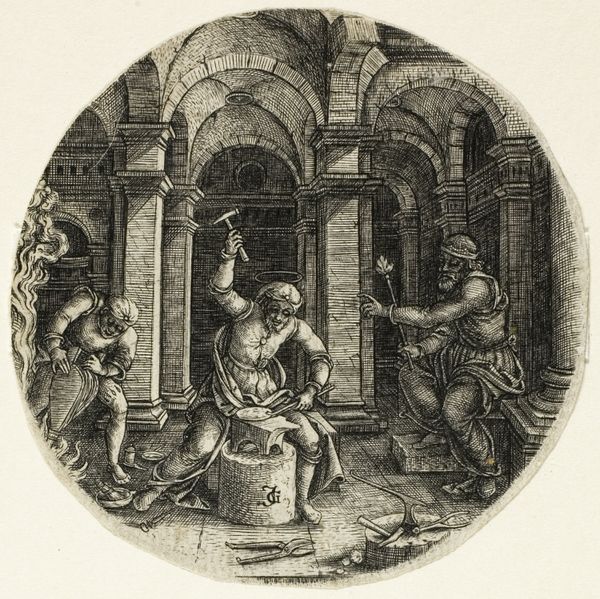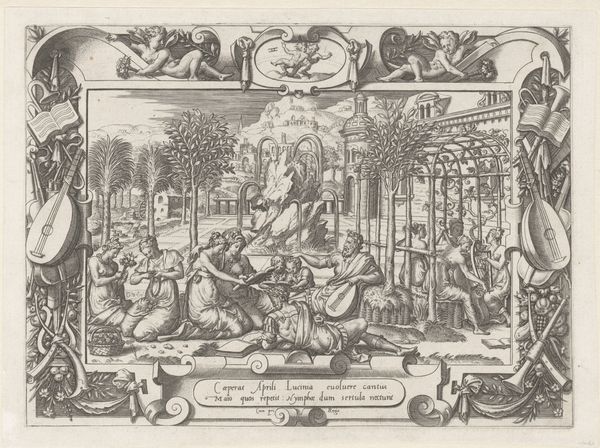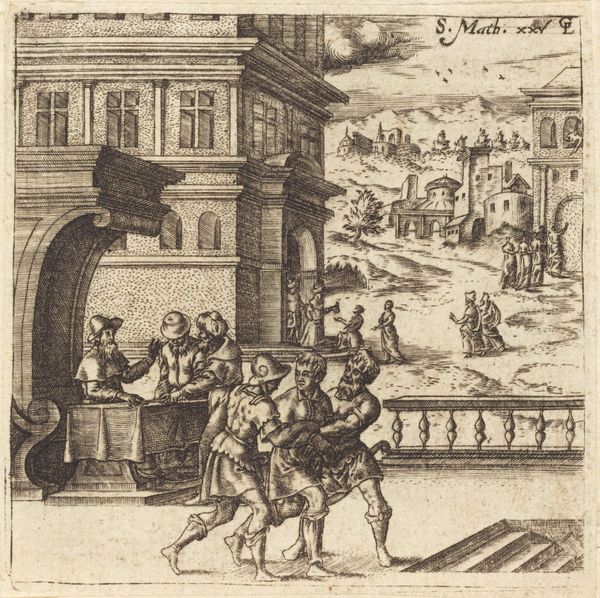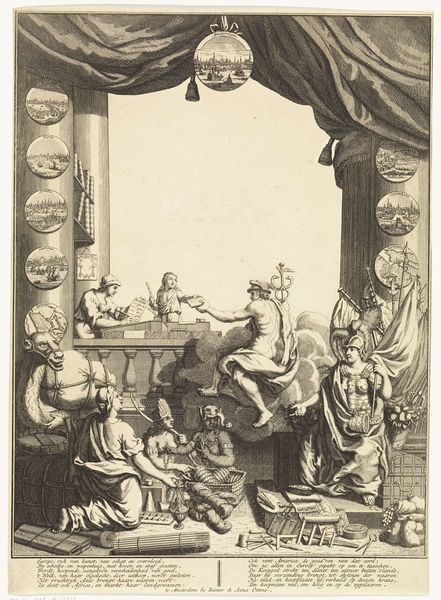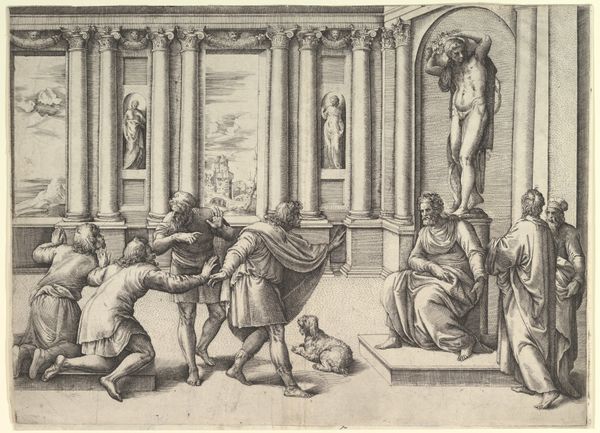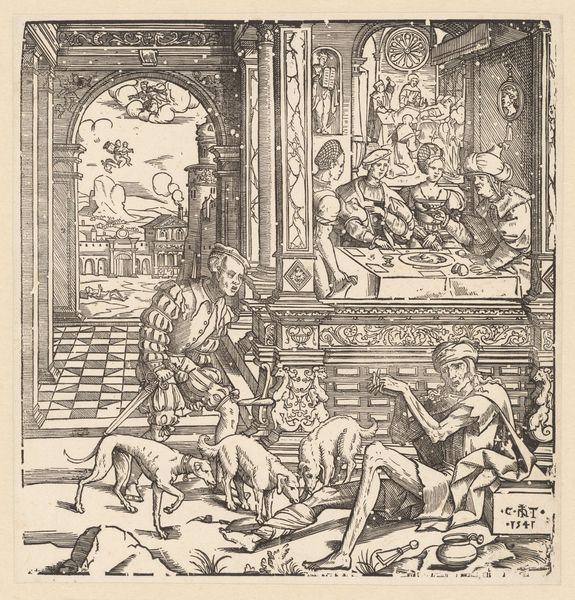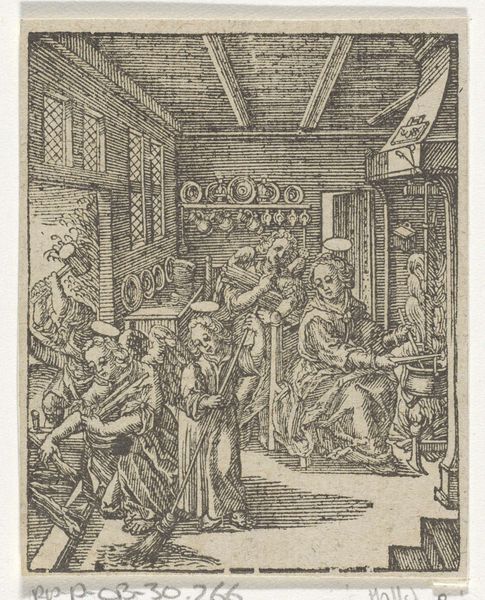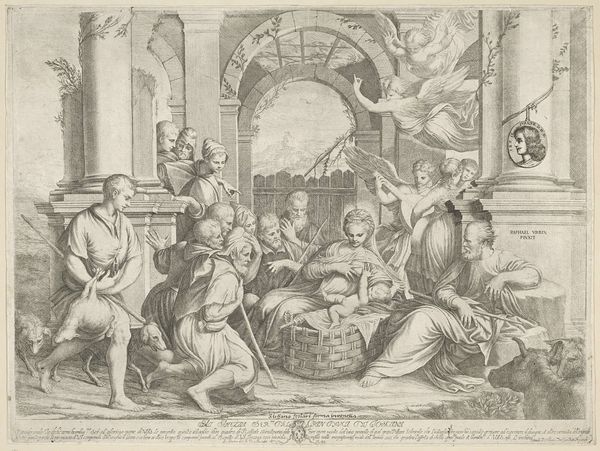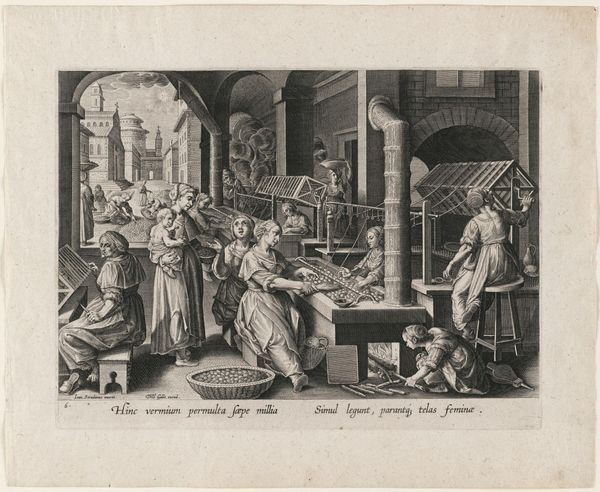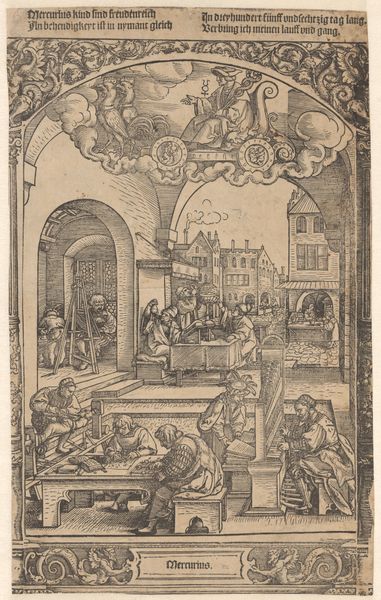
drawing, print, paper, engraving
#
drawing
#
medieval
# print
#
figuration
#
paper
#
france
#
history-painting
#
italian-renaissance
#
engraving
Dimensions: 81 × 79 mm (sheet, trimmed within platemark)
Copyright: Public Domain
Curator: This is "The Virgin Seated on an Altar," an engraving made sometime between 1520 and 1540 by Jean de Gourmont. The circular composition presents a classical architectural space. Editor: The immediate impression for me is one of striking spatial construction—almost austere, but balanced by the figures' delicate positioning and emotional attitudes. Curator: The linear perspective certainly gives it that depth. Consider the material limitations; the engraving is deceptively intricate in its detail. The very act of carving these fine lines into the metal plate is painstaking labor, requiring specialized knowledge. It speaks to an artisan’s devotion. Editor: Absolutely, and look at how those etched lines articulate light and shadow. They've made the two-dimensional space three-dimensional. Notice the tonal range achieved with a relatively limited medium. The cultural implication suggests a society investing in printmaking, expanding the accessibility of religious imagery. Curator: The devotion, both in the subject matter and craft, elevates the work. I can trace connections between printmakers' workshops and the economy of sacred iconography. Who commissioned it, for what devotional purpose? The repetitive gesture of prayer among the kneeling figures evokes both the act of producing copies of the image. Editor: Yes, it speaks of faith, but equally, of repetition and perhaps the drudgery within a workshop. The raw materials of faith—paper, ink—are crafted to embody something greater. It makes me consider this Virgin’s physical seat—the carved altar, its stoneness contrasting her human fragility. What relationship do these figures have to the labor behind such a structure? Curator: These questions disrupt a simplistic reading. There is certainly an element of visual harmony created through recurring architectural forms and their sharp geometricity, giving a rigid setting to tender representations. Editor: So while its composition draws us to these iconic shapes and forms, we shouldn't let the simplicity hide all the hands, literally and figuratively, that this image went through. This isn't merely a scene but an articulation of collective effort in reproducing a very specific kind of object, to which this artifact bears witness. Curator: It’s fascinating to peel back those layers and appreciate it not only as a singular image but as a nexus of materiality, faith, and cultural forces. Editor: Indeed, seeing the artwork within its conditions, adds so much more depth to the final product than a quick study of form can bring.
Comments
No comments
Be the first to comment and join the conversation on the ultimate creative platform.

